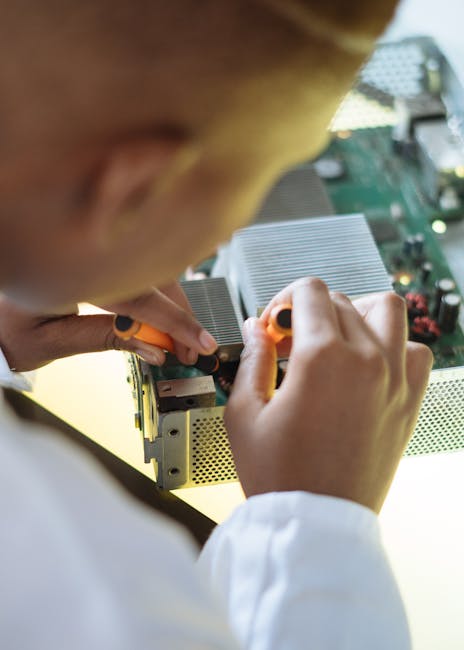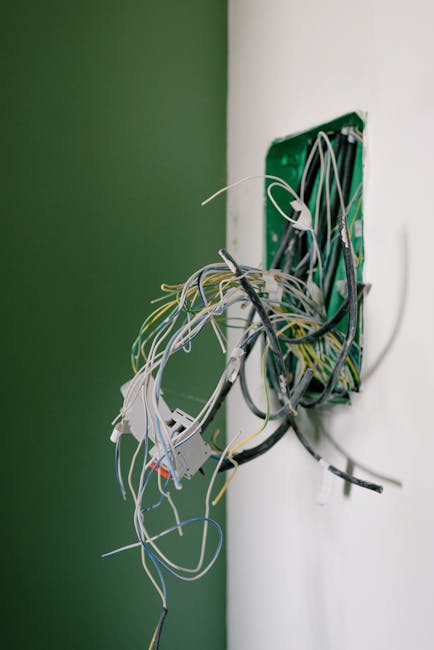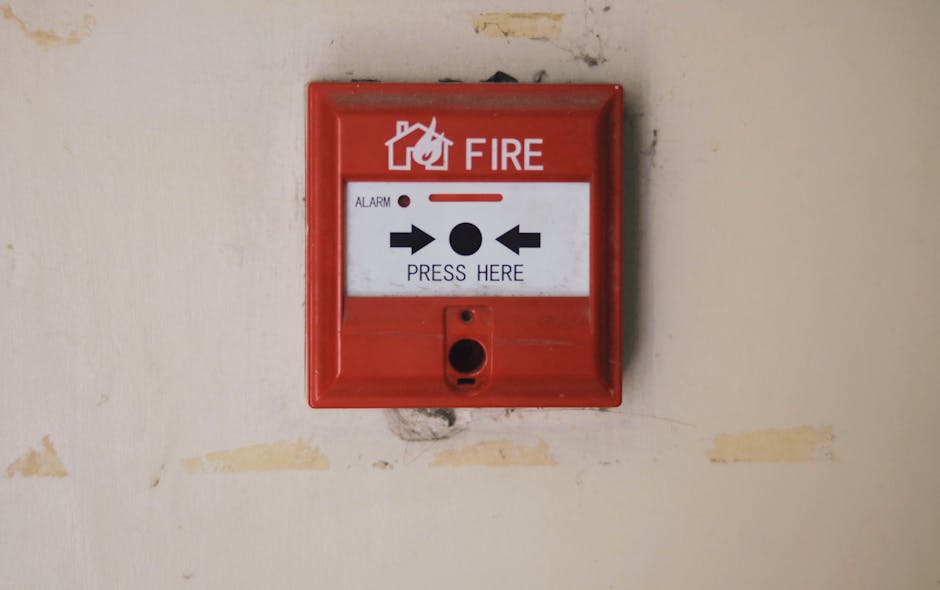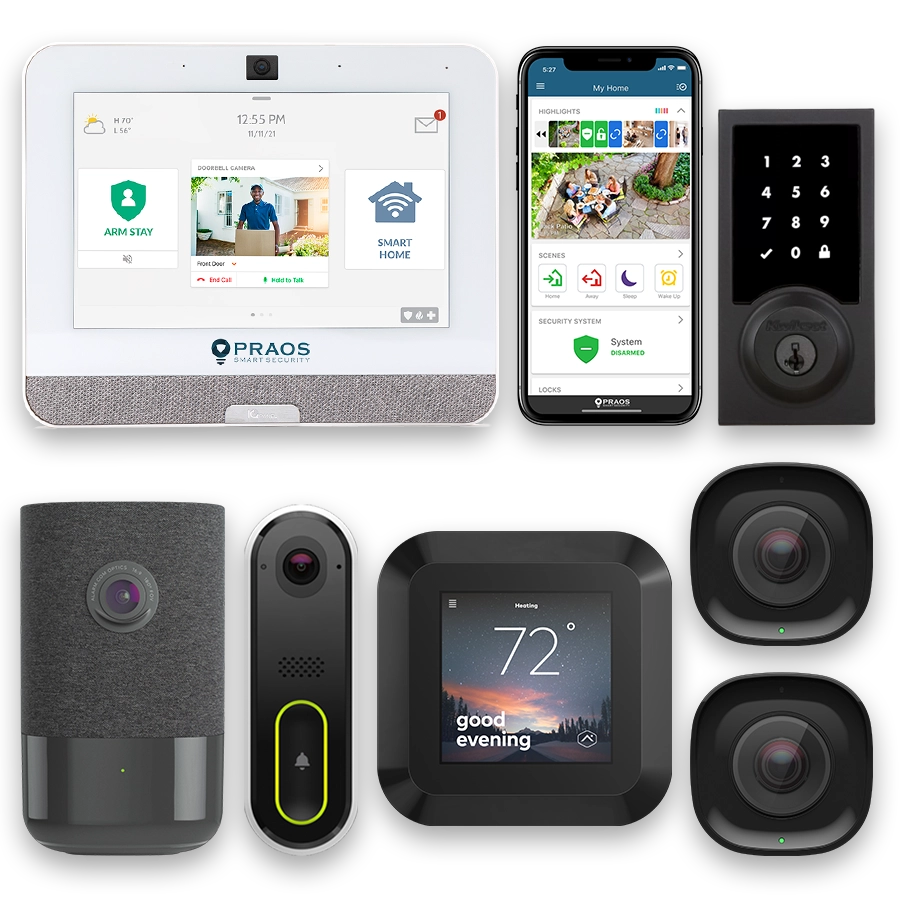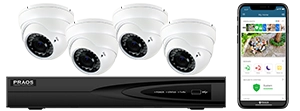- Understanding the Importance of Security for Small Businesses
- Key Components of a Comprehensive Alarm System
- Selecting the Right Alarm System for Your Business Needs
- Installation Best Practices for Alarm Systems
- Integrating Alarm Systems with Other Security Measures
- Regular Maintenance and Testing of Alarm Systems
- Responding to Alarm System Alerts and Incidents
- Adapting and Scaling Your Alarm System as Your Business Grows
Understanding the Importance of Security for Small Businesses
Security is a critical concern for small businesses, as they often lack the extensive resources that larger corporations have to deter criminal activity. According to the FBI’s Uniform Crime Reporting (UCR) Program, businesses of all sizes experience burglary, theft, and vandalism at significant rates. The impact of such incidents can be particularly damaging to small businesses, which may not have the financial resilience to recover quickly from losses or disruptions.
A comprehensive alarm system serves as a crucial line of defense against unauthorized access and criminal activities. Evidence suggests that businesses equipped with alarm systems are less likely to be targeted. The National Criminal Justice Reference Service (NCJRS) indicates that businesses with visible security systems are less attractive to potential intruders, who often seek easier targets.
Beyond deterring crime, an alarm system helps to ensure the safety of employees and customers. The Occupational Safety and Health Administration (OSHA) emphasizes that maintaining a secure workplace is essential for employee well-being and productivity. Alarm systems can alert staff to emergency situations, enabling prompt responses and potentially saving lives in the event of fires or other hazards.
Moreover, insurance companies frequently offer reduced premiums for businesses that invest in reliable security measures. The Insurance Information Institute (III) notes that having a comprehensive alarm system can lower the risk profile of a small business, resulting in financial benefits through cost savings on insurance policies.
In summary, investing in a comprehensive alarm system is not just a preventative measure against crime but a multifaceted strategy that enhances the overall safety, resilience, and financial stability of a small business. The initial expense of installing such a system is often outweighed by the long-term benefits, including deterrence of criminal activity, protection of assets, and potential reductions in insurance costs.
Key Components of a Comprehensive Alarm System
A comprehensive alarm system for a small business consists of several key components designed to work together to detect and respond to potential security threats. Understanding these components can help ensure that the system provides complete coverage and enhances the overall security of the business premises.
Intrusion Detection: This is the core element of any alarm system. It includes sensors that detect unauthorized entry into a building. Key devices include:
- Door and window sensors
- Motion detectors
- Glass break detectors
Alarm Control Panel: The control panel is the central hub of the alarm system. It receives signals from the sensors and triggers alerts when potential threats are detected. It allows you to arm or disarm the system and can be connected to a monitoring service.
Siren and Alerts: Audible alarms are crucial in deterring intruders. When sensors are triggered, sirens sound to alert anyone nearby and scare off potential burglars. Modern systems may also send alerts to your phone or to a monitoring service.
Surveillance Cameras: Although technically not part of the alarm system, integrating surveillance cameras enhances security by allowing you to monitor activity in and around the business. Types of cameras include:
- CCTV cameras
- IP cameras
- Hidden cameras
Here is a table summarizing the key components:
| Component | Function |
|---|---|
| Intrusion Detection | Detects unauthorized entry through sensors on doors, windows, and inside the property. |
| Alarm Control Panel | Central unit that processes signals from sensors and triggers alerts. |
| Siren and Alerts | Provides audible alarm and sends notifications. |
| Surveillance Cameras | Monitors and records activity for increased security coverage. |
Environmental Sensors: These sensors protect against non-intrusion threats such as fire, gas leaks, or flooding. They include:
- Smoke detectors
- Carbon monoxide detectors
- Water leak sensors
- Temperature sensors
Remote Access: Modern alarm systems often offer mobile app integration, allowing business owners to monitor and control the system remotely. This feature enhances convenience and responsiveness.
Professional Monitoring: Subscribing to a professional monitoring service ensures that alerts are acted upon promptly. Monitoring centers can verify incidents and dispatch emergency services if necessary.
A well-integrated and comprehensive alarm system incorporates these components to provide robust security for small businesses. Proper implementation of each element enhances the overall effectiveness of the security measures, making it more difficult for potential intruders to succeed and ensuring rapid response to incidents.
Selecting the Right Alarm System for Your Business Needs
Selecting the right alarm system for your business is crucial to ensure comprehensive protection. Factors to consider include the size of your business, nature of your inventory, and location-specific security concerns.
Start by assessing the specific needs of your business. For example, a retail store might prioritize protection against shoplifting and after-hours break-ins, while an office might focus more on unauthorized access to sensitive areas.
Consider the types of sensors that are most appropriate for your environment. Common options include:
- Motion detectors, which identify movement within a specified area.
- Glass break sensors, which detect the sound of breaking glass.
- Door and window contacts, which alert when a door or window is opened.
- Environmental sensors, like smoke or carbon monoxide detectors, which provide alerts for safety hazards.
Another important feature is the alarm communication method. Choose between monitored and unmonitored systems. Monitored systems alert a remote monitoring center that can dispatch emergency responders, while unmonitored systems rely on alarms or local notifications. Studies show that monitored systems generally offer quicker response times.
Evaluate the system’s scalability and adaptability. As your business grows, you may need to add more sensors or integrate with new security measures. Opting for a system that allows for these expansions can save time and resources in the long run.
Also, look into the integration capabilities of the alarm system. Modern systems can often integrate with CCTV, access control systems, and even smart devices. This enhances overall security and provides a more cohesive monitoring solution.
Cost is a significant factor. Ensure that the system fits within your budget but does not compromise essential features. Consider both upfront costs and any recurring fees associated with monitoring services.
Finally, verify the reliability and reputation of the alarm system provider. Check online reviews, seek recommendations, and consult industry resources. A reputable provider can offer valuable support and service over the lifecycle of the system.
By methodically evaluating these considerations, you can select an alarm system that provides robust protection, meets your specific needs, and scales with your business growth.
Installation Best Practices for Alarm Systems
Proper installation of an alarm system is crucial to ensure its effectiveness in securing your small business. Following best practices during installation can help prevent vulnerabilities and ensure reliable performance.
Professional Installation vs. DIY
Deciding between professional installation and a DIY approach depends on several factors including the complexity of the alarm system and your technical expertise. Professional installation is generally recommended for more complex systems to ensure all components are correctly configured and optimized for your specific environment.
Placement of Sensors and Detectors
One of the most important aspects of installation is the placement of sensors and detectors. These should be strategically positioned to cover all entry points such as doors and windows. Motion detectors should be installed in areas that are not typically trafficked by employees to reduce false alarms. Utilize corner mounts for broader coverage and ensure that cameras are placed to cover blind spots.
Compliance with Local and National Regulations
Ensure that your installation complies with local and national regulations. This may involve specific guidelines regarding the placement of cameras and sensors, and requirements for signage indicating surveillance areas. Consult with a professional installer who is familiar with these regulations to avoid legal complications.
System Configuration
Once the hardware is installed, the system needs to be properly configured to integrate all components. This includes setting up control panels, configuring alarm triggers, and enabling remote access if supported by the system. Proper configuration ensures that the alarm system functions as intended and can be easily monitored and controlled.
Testing the System
After installation, thoroughly test the system to ensure all sensors, detectors, and alarms are functioning correctly. This includes conducting walk-tests to trigger motion detectors, testing door and window sensors, and simulating alarm conditions to verify response time and system alerts. Regular testing post-installation can help identify and resolve potential issues early on.
Documentation and Training
Maintain detailed documentation of the installation process, including the placement of all sensors and detectors, system configuration settings, and any compliance documentation. Additionally, provide training for employees on how to use the system, including how to arm and disarm the alarms, and steps to take in the event of an alarm trigger.
By adhering to these installation best practices, you can ensure that your alarm system provides optimal protection for your small business, minimizing vulnerabilities and enhancing overall security.
Integrating Alarm Systems with Other Security Measures
Integrating your alarm system with other security measures is crucial for creating a strong, multi-layered defense for your small business. By combining different security solutions, you can enhance overall protection, prevent unauthorized access, and respond more effectively to potential threats.
Surveillance Cameras
Surveillance cameras are a fundamental addition to alarm systems. They provide visual coverage of your business premises, which can be invaluable in deterring criminal activity and providing evidence in the event of an incident.
- Surveillance cameras should cover all entry points and high-risk areas such as cash registers and stockrooms.
- Consider cameras with motion detection capabilities that can trigger alarms and send alerts directly to security personnel or business owners.
- Opt for high-resolution cameras to ensure clear footage that can be useful for identification purposes.
Access Control Systems
Access control systems restrict and monitor who can enter certain areas of your business. These systems often work in conjunction with alarm systems to enhance security.
- Electronic key cards or biometric systems can manage and log access to restricted areas, providing a record of who entered and when.
- Integrating these systems with your alarm system can trigger alarms if unauthorized access is attempted.
Security Lighting
Security lighting serves as a deterrent to potential criminals by increasing the visibility around your business premises. When linked to your alarm system, it can also enhance security response measures.
- Motion-activated lights can be placed near entry points to surprise and deter intruders.
- Well-lit areas reduce the likelihood of undetected breaches and make surveillance footage more effective.
Intrusion Detection
Advanced intrusion detection sensors, such as glass break detectors and door/window sensors, can provide early warnings of potential breaches.
- These sensors can be placed on all possible entry points to ensure immediate detection of unauthorized access.
- Integration with the alarm system ensures that alerts are sent out as soon as any intrusion is detected.
Table: Benefits of Integrating Security Measures
| Security Measure | Benefit |
|---|---|
| Surveillance Cameras | Provide visual deterrent and evidence collection |
| Access Control | Restrict and monitor access to sensitive areas |
| Security Lighting | Increase visibility and deter intruders |
| Intrusion Detection | Early warning of unauthorized access |
Conclusion
Integrating your alarm system with other security measures significantly strengthens the overall security posture of your small business. Each component plays a critical role in ensuring comprehensive protection, ultimately reducing the likelihood of security breaches and ensuring a rapid response when incidents occur. By adopting a layered security approach, you can better safeguard your assets, employees, and customers.
Regular Maintenance and Testing of Alarm Systems
Regular maintenance and testing of your alarm system are essential to ensure it operates effectively and provides continuous protection for your small business. Neglecting these procedures can lead to false alarms, undetected security breaches, and system failures. Here are key steps to maintaining and testing your alarm system:
1. Routine Inspection
Schedule routine inspections of all components of the alarm system, including sensors, control panels, and communication devices. Inspecting the system regularly helps identify and address any wear and tear or potential issues before they lead to system failures.
2. Battery Replacement
Most alarm systems rely on battery power for backup during power outages. It’s crucial to periodically check and replace the batteries in both the control panel and individual sensors to ensure they function properly during an emergency.
3. Software Updates
Ensure that the alarm system’s firmware and software are up-to-date. Manufacturers may release updates to improve performance, patch security vulnerabilities, or add new features. Regularly check for and install these updates as recommended by the manufacturer.
4. Professional Maintenance Services
Consider contracting professional maintenance services to handle complex tasks and ensure your system remains in optimal condition. Security companies often offer maintenance packages that include regular inspections, testing, and emergency repairs.
5. Testing the Alarm System
- Monthly Testing: Conduct a full system test at least once a month. This includes activating motion detectors, door/window sensors, and other components to ensure they trigger the alarm properly.
- Communication Testing: Verify that the alarm signals are correctly sent to the monitoring center or your designated contacts. This can be done by notifying the monitoring center before a test to avoid false dispatches.
- Response Testing: Test the system’s response mechanisms, such as sirens, lights, and notifications, to ensure they activate as expected during an alarm event.
6. Record Keeping
Maintain detailed records of all maintenance activities, including inspections, tests, battery replacements, and software updates. Documenting these activities helps track the system’s performance and can be useful for warranty claims or when seeking support from the manufacturer or service provider.
7. Employee Training
Regularly train and re-train employees on how to use the alarm system, including arming/disarming procedures and what to do in case of a false alarm or an actual security threat. Well-informed employees are crucial for maintaining the effectiveness of the alarm system.
By following these practices, you can ensure your alarm system remains reliable and effective in protecting your small business. Regular maintenance and testing are not just best practices; they are critical components of a comprehensive security strategy.
Responding to Alarm System Alerts and Incidents
Once an alarm system alert is triggered, a swift and efficient response is critical to mitigate potential risks and damages. Properly responding to alarm system alerts and incidents involves several steps and best practices that can help ensure the safety and security of your small business.
Acknowledge and Verify the Alert:
First, it is essential to acknowledge and verify the alarm. False alarms can occur due to various reasons such as system errors or environmental factors. Immediate verification helps to differentiate between genuine threats and false alarms. Verification can be done through security cameras, contacting on-site personnel, or utilizing verification features provided by some alarm systems.
Notify Authorities and Personnel:
If the alert is verified as a legitimate threat, promptly notify the relevant authorities such as the police, fire department, or medical emergency services, depending on the nature of the incident. Additionally, designated personnel within your organization should be informed according to the established response plan. This can include security staff, managers, and key stakeholders.
Follow the Emergency Response Plan:
Having a predefined emergency response plan is crucial. This plan should outline specific steps to be taken by employees during various types of incidents. Actions could include evacuations, lockdown procedures, or securing specific areas of the premises. Regular training and drills ensure that all employees are familiar with these procedures.
Document the Incident:
Thorough documentation of the incident is important for future reference and analysis. This includes recording the date and time of the alert, the nature of the incident, response actions taken, and any interactions with authorities. Detailed records can help in improving future responses and in any investigations or insurance claims if necessary.
Conduct a Post-Incident Review:
After the incident has been resolved, a review should be conducted to analyze the response and identify any areas for improvement. This can involve discussions with responding personnel, reviewing security footage, and assessing the effectiveness of the response plan. Lessons learned from the review can be used to update and refine the alarm system and emergency procedures.
By following these steps, small businesses can ensure that they respond effectively to alarm system alerts and incidents, thereby minimizing potential impacts and enhancing overall security measures.
Adapting and Scaling Your Alarm System as Your Business Grows
As your small business grows, the security needs and requirements will also evolve. It’s crucial to adapt and scale your alarm system to ensure continued protection. This process involves evaluating your current system, identifying new security needs, and implementing necessary upgrades or enhancements.
First, conduct a thorough assessment of your existing alarm system. Examine whether the current system covers all critical areas of your business operations. Consider factors such as changes in physical layout, increased assets, and expanded operational hours. Regular assessments can help you identify any gaps in security and highlight areas that need improvement.
When adapting your alarm system, focus on incorporating scalable solutions. Many modern alarm systems are designed with scalability in mind, allowing you to add new devices or upgrade existing ones without significant overhauls. For instance, wireless alarm systems can be an excellent option as they offer flexibility in adding new sensors and cameras without extensive wiring work.
An essential part of adapting your alarm system is integrating advanced technologies. Consider the adoption of smart features such as remote monitoring, mobile alerts, and video surveillance. These features not only provide enhanced security but also offer convenience in managing and responding to security incidents.
Additionally, evaluate the benefits of cloud-based systems. These systems offer several advantages, including real-time monitoring, data storage, and access from multiple devices. Cloud-based solutions can significantly improve your ability to scale your alarm system and maintain high levels of security regardless of your business’s growth.
As your business expands, it’s also crucial to invest in professional security services. Security experts can provide valuable insights and recommendations tailored to your specific needs. They can assist with system upgrades, integrations, and ongoing maintenance to ensure your alarm system remains effective.
Lastly, keep employee training up to date. Ensure that your staff is aware of any changes in the alarm system and understands how to use new features effectively. Regular training sessions can enhance the overall efficiency of your security measures and ensure that everyone is prepared to respond to potential security threats.
In summary, adapting and scaling your alarm system is a continuous process that should align with your business growth. By regularly assessing your security needs, integrating scalable and advanced technologies, and seeking professional assistance, you can maintain a robust alarm system that evolves with your business.
